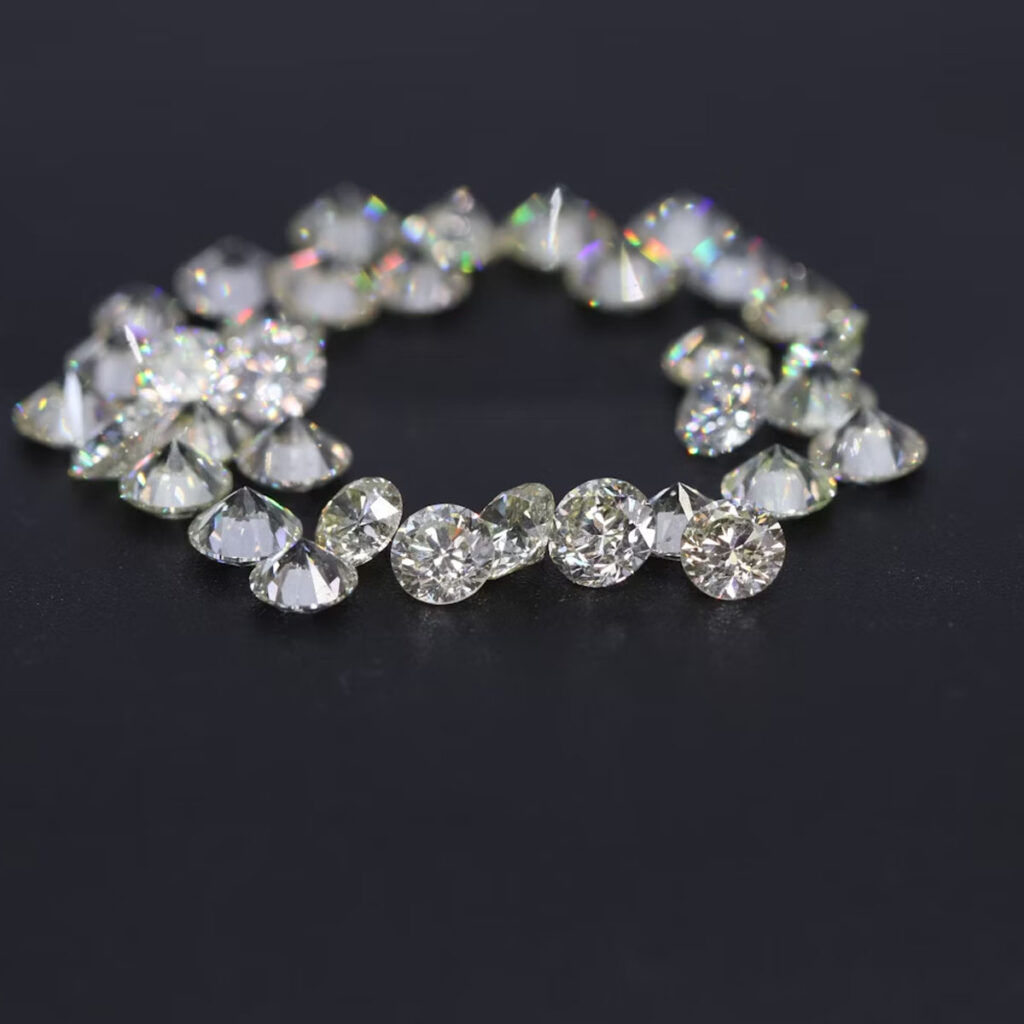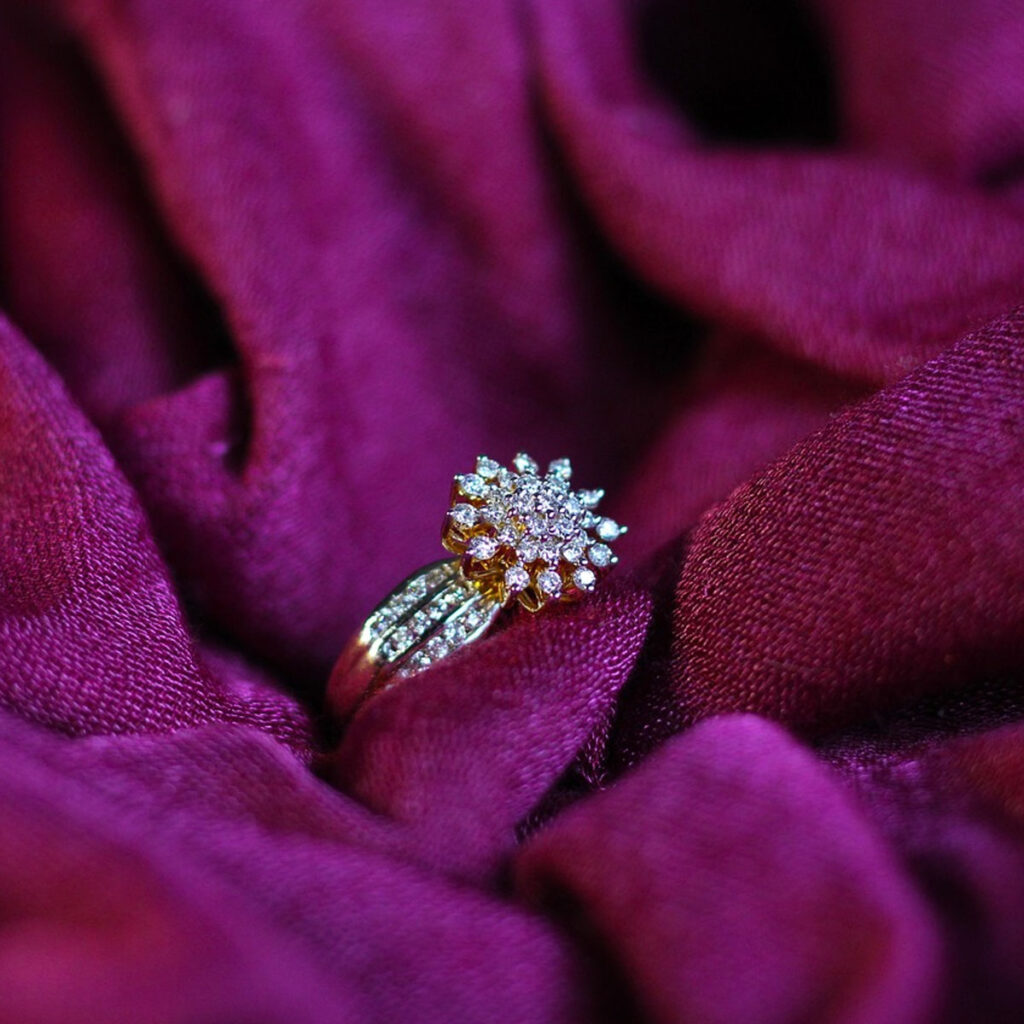When most of us picture a diamond, we see something polished, symmetrical, and glittering in a velvet-lined box. But that’s only half the story. What if we paused to admire diamonds before they went through their makeover? Natural uncut diamonds—those rugged, untouched stones lifted straight from the Earth’s depths—offer something even more powerful: a glimpse of geological history frozen in form.
These stones haven’t been shaped or glossed to meet our idea of perfection. Instead, they retain their original identity, complete with quirks, inclusions, and raw charm. In a world chasing perfection, uncut diamonds are a quiet rebellion—proof that nature doesn’t need a finishing touch to be breathtaking. Today, they’re not just geological specimens; they’re fashion statements, heirlooms, and silent storytellers.
A natural uncut diamond, often called a rough diamond, is the original article—untouched, unshaped, and unpolished. Pulled from deep within the Earth, it might not dazzle in the traditional sense, but it carries a rugged allure that’s every bit as captivating. To the untrained eye, it could be mistaken for a common stone. But to a gem expert, it’s a marvel of pressure, time, and heat.
These diamonds come with their edges still intact and their stories unedited. While they might not sparkle like their polished siblings, they carry with them the extraordinary rarity of being entirely themselves.
The difference between a rough diamond and a polished one is like comparing a manuscript to a printed novel. One is raw potential; the other, a final product crafted for the public eye.
Uncut diamonds have a subtle internal glow, often hidden beneath cloudy surfaces. Their beauty is quiet, mysterious. Polished diamonds, by contrast, are cut to catch the light and dazzle with fire and brilliance. They’ve been refined to standard shapes—round, princess, emerald—through a process that prioritises sparkle over substance.
Despite usually being valued lower per carat, uncut diamonds are gaining fans. A good example is Polki jewellery, a traditional Indian design where diamonds are used in their natural, uncut form, often enhanced with foil to reflect light. The result? Ancient elegance with a modern twist.
While lab-grown diamonds mimic nature almost perfectly—they share the same carbon structure and optical traits—they don’t come with the same backstory. These diamonds are made in labs using High Pressure High Temperature (HPHT) or Chemical Vapor Deposition (CVD) methods.
Rough lab-grown diamonds tend to form in cubic or mixed structures, unlike the octahedral crystals typically seen in natural stones. They’re often touted as a greener choice, and while that’s true in part, the emotional and geological value of a natural diamond still holds strong for many buyers.
One of the few ways to tell them apart in their rough state? Specialist lab equipment. That’s how close they can appear—but also how much expertise this niche market demands.
Trivia Time: The largest naturally formed octahedral diamond ever discovered is the Kimberley Octahedron, weighing a jaw-dropping 616 carats. It’s never been cut and remains a monument to nature’s craftsmanship.
If Mother Nature had a go-to shape for diamonds, it would be the octahedron—two pyramids joined at their bases. These eight-faced forms are not just common; they’re also the most structurally sound. Large, symmetrical octahedrons are rare, especially intact ones since the explosive force that brings them to the surface often causes fractures.
More rounded and bulbous, dodecahedral diamonds sport 12 to 24 sides and often appear slightly inflated. They’re especially valued by designers for their potential to yield multiple cuts—or for being jewellery-ready just as they are. Their gentle curves offer a distinct visual language.
Macles are twinned crystals, forming a flattened triangle with a silky, almost frosted appearance. These are not only rare but also highly distinctive, often used without cutting in bespoke pieces. Their uniqueness lies in the fact that no two macles ever look the same, making them prized for one-of-a-kind designs.
Cubic diamonds are uncommon and often opaque, making them less ideal for traditional cutting but beloved by collectors and avant-garde jewellers for their non-traditional appeal. It’s worth noting: don’t confuse natural cubic diamonds with cubic zirconia, a synthetic substitute with zero diamond DNA.
Not all diamonds fit into a tidy category. Some undergo resorption, where edges dissolve during growth, resulting in rounded or even spherical forms. Others are broken, distorted, or stretched into elongated (prolate) or flattened (oblate) shapes. These oddballs tell stories of turbulent geological journeys—and designers are listening.
Rough diamonds have cleavage planes—directions along which they naturally break. Cutters follow these guides to split stones safely. Another internal map is the grain, which refers to the direction of crystal growth and affects how a stone resists or accepts a blade.
Cutting is usually about getting the most out of a stone—more sparkle, more symmetry, more carats. But when dealing with uncut diamonds, the goal often shifts: preserve the original shape, highlight its raw form, and minimise what’s lost in the process. Sometimes, it’s better to let the diamond be.
In polished gems, inclusions are often hidden or cut away. But in natural diamonds, they’re part of the personality. Some cutters even choose to highlight them, creating a kind of landscape inside the stone. It’s a subtle nod to the Earth’s chaotic creativity.


Think of this as a rinse and a polish—nothing more. Rough cut diamonds stay true to their original form, perhaps with a few softened edges. The goal is to celebrate the raw look, not transform it.
Here, cutters make small tweaks—smoothing naturally formed faces or refining symmetry. These subtle edits enhance without erasing the original shape.
By slicing diamonds into thin sheets and polishing them, artisans reveal internal patterns, colours, and inclusions. These aren’t your typical glittery stones; they’re more like windows into the Earth.
Originating in India, Polki jewellery uses uncut diamonds set on reflective foil, usually in gold. It’s an art form that has endured for centuries and remains hugely popular in bridal and ceremonial designs.
Today’s jewellery lovers are drawn to authenticity. They want pieces that reflect their personality, not just traditional ideals of beauty. Uncut diamonds tick those boxes: they’re unique, natural, and quietly luxurious.
From engagement rings to earrings and pendants, uncut diamonds are becoming a go-to choice for people looking to make a personal statement. Bezel settings are particularly popular, hugging the irregular shapes of stones like macles without overpowering them.
Uncut diamonds are generally more affordable per carat than their polished peers. But don’t be fooled—rarity, colour, and form can push prices just as high, if not higher.
Unique colours (like pink, blue, or green), unusual shapes, and remarkable inclusions all add to the market value of an uncut diamond.
FeatureUncut Diamond ExamplePolished Diamond ExampleAverage Price per Carat (USD)Notes
Octahedron 1 ct, near colourless, good form Round Brilliant, 1 ct, VS clarity $1,500 – $3,500 Value depends on symmetry and clarity
Dodecahedron 1 ct, light yellow, well-formed Cushion Cut, 1 ct, VS clarity $1,800 – $4,500 Unique forms fetch premium prices
Macle 1 ct, clear triangular form Triangle Cut, 1 ct, VS clarity $2,500 – $6,000+ Distinct shape boosts value
Polki 1 ct, traditional setting Rose Cut, 1 ct, similar clarity $800 – $2,500 Handcrafted appeal affects pricing
Historically, raw diamonds were used in royal Polki jewellery across India, where their unrefined beauty was treasured as a sign of divine power and Earth’s bounty. Today, designers continue the tradition, placing uncut diamonds in centre stage—especially those with striking natural forms like macles or octahedrons.
Rather than overpower the stone, modern jewellers create minimal settings that let the natural crystal do the talking.
Natural uncut diamonds remind us that beauty doesn’t always need polishing. They arrive as they are—rugged, radiant, and resolutely individual. With every facet left uncut, they carry the signature of the Earth itself, offering a direct link to the planet’s fiery past and the craftsmanship of time.
As more people gravitate towards authenticity and understated elegance, uncut diamonds are carving out a new kind of luxury. One that celebrates flaws, shapes, stories, and the quiet magic of being untouched.

We invite you to visit our showroom in the heart of London’s jewellery district. Our team of experts is here to help you find or design the perfect engagement ring, whether you’re looking for a timeless diamond solitaire or something completely unique.
Find Us at 15 Greville Street, Hatton Garden, London EC1N 8SQ.